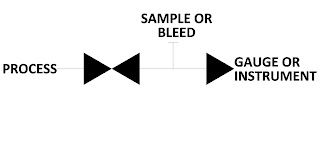 |
| Examples of one, two, and three piece ball valves. Image courtesy Duravalve |
When selecting a ball valve, one facet of construction will be evident in your research. There are three common types of ball valve construction; one piece, two piece, and three piece. Here are some general considerations and differences among the three types.
- A one piece ball valve has a body and end connections formed from a single piece of material. This construction presents a comparatively reduced number of opportunities for leakage. The valve trim and seals are inserted through one of the end connections. This type of valve will not have a port size equal to the line size. The simplicity of the one piece body design tends to make their cost lower than the other versions. Once the valve is in place, it cannot be serviced without removing the entire valve assembly from the piping system.
- Two piece ball valves generally have one piece that includes an end connection and the body, plus a second piece that fits into the first that will hold the trim in place and provide the second end connection. The construction presents an additional leak potential where the two pieces are joined, but also allows disassembly of the valve for replacement of the internals. These valves can provide full port service and bidirectional flow shutoff.
- A three piece ball valve essentially separates the connection portions of the valve assembly from the body of the valve. These will be more expensive than either of the other two types, but their allowance for removing the valve body and trim from the piping system while leaving the connections in place may prove valuable for many applications. Full port and bidirectional shutoff can be provided by this construction.
Properly applied, all these valves will provide good service. Your selection depends on the demands of the application. Share your fluid measurement and control requirements and challenges with process control specialists, leveraging your own knowledge and experience with their product application expertise to develop effective solutions.



